- Home
- Clive Cussler
Inca Gold dp-12 Page 17
Inca Gold dp-12 Read online
Page 17
"You attached the other end?" she challenged him. "To what?"
"A set of bones masquerading as a Spanish conquistador."
"You're beyond belief," she said helplessly.
It was a long time since a woman had stared at him like that. "Do you think I'm a head case? Do you think I enjoy this? I damn well don't enjoy spending my time saving your backside. Okay, you want to die and be buried in a thousand bits and pieces, enjoy the trip."
Uncertainty crept into her expression. "You're not making sense."
"Perhaps a little demonstration is in order." Pitt gently pulled in the line until it became taut. Then he gave it a hard jerk.
For a moment nothing happened. Then a rumbling came from the bottom of the well, swelling in volume, sending tremors through the limestone walls. The violence of the explosion was electrifying. The underwater blast came like the eruption of a huge depth charge as a seething column of white froth and green slime burst out of the sinkhole, splattering everyone and everything standing within 20 meters (66 feet) of the edge. The thunder of the explosion rolled over the jungle as the spray fell back into the sinkhole, leaving a heavy mist that swirled into the sky and temporarily blocked out the sun.
Shannon stood half-drenched and stared down into her beloved sacred well as if she couldn't make up her mind whether or not to be sick. Everyone around the edge stood like statues suddenly frozen in shock. Only Pitt looked as though he'd witnessed an everyday event.
Fading incomprehension and the tentative beginnings of understanding appeared in Shannon's eyes. "How in God's name did you know. . ."
"That there was a booby trap?" Pitt finished. "No great deduction. Whoever buried a good forty-five kilograms of high explosive under the skeleton made two major mistakes. One, why clean out every antiquity but the most obvious? And two, the bones couldn't have been more than fifty years old and the armor hasn't rusted enough to have been underwater for four centuries."
"Who would have done such a thing?" asked Rodgers dazedly.
"The same man who murdered Doc Miller," answered Pitt.
"The imposter?"
"More likely Amaru. The man who took Miller's place didn't want to risk exposure and investigation by Peruvian authorities, not before they cleaned out the City of the Dead. The Solperrzachaco had robbed the sacrificial well of its artifacts long before you arrived. That's why the imposter sent out a call for help when you and Shannon vanished in the sinkhole. It was all part of the plot to make your deaths look like an accident. Although he felt reasonably sure that you'd be sucked into the adjoining cavern by the underwater surge before you could fully search the bottom and realize all artifacts had been removed, he hedged his bets by lowering the phony conquistador into position purely as a red herring to blow you to pieces in the event the surge didn't carry you away."
Shannon's eyes took on a saddened and disillusioned look. "Then all antiquities from the sacred well are gone."
"You can take a small measure of cheer in knowing they were removed and not destroyed," said Pitt.
"They'll turn up," said Giordino consolingly. "They can't remain hidden away in some rich guy's collection forever."
"You don't understand the discipline of archaeology," Shannon said dully. "No scholar can study the artifacts, classify or trace them without knowing their exact site of origin. Now we can learn nothing of the people who once lived here and built the city. A vast archive, a time capsule of scientific information, has been irretrievably lost."
"I'm sorry all your hopes and efforts have come to grief," Pitt said sincerely.
"Grief, yes," she said, thoroughly defeated now. "More like a tragedy."
Rudi Gunn walked back from the helicopter that was transporting Miller's body to the morgue in Lima. "Sorry to interrupt," he said to Pitt. "Our job is finished here. I suggest we pack up the helicopter, lift off, and rendezvous with Dr. Ortiz at the City of the Dead."
Pitt nodded and turned to Shannon. "Well, shall we move on to the next disaster your antiquity looters have left us?"
Dr. Alberto Ortiz was a lean, wiry old bird in his early seventies. He stood off to one side of the helicopter landing site dressed in a white duck shirt and matching pants. A long, flowing, white moustache drooped across his face, making him look like a wanted poster for an aging Mexican bandido. If flamboyance was his trademark, it was demonstrated by a wide-brimmed panama hat sporting a colorful band, a pair of expensive designer sandals, and a tall iced drink in one hand. A Hollywood casting director searching for someone to play a beachcomber in a South Seas epic would easily have decided that Dr. Ortiz fit the role to perfection. He was not what the NUMA men had pictured as Peru's most renowned expert on ancient culture.
He came smiling to greet the newcomers, drink in left hand, right extended for shaking. "You're early," he said warmly in almost perfect English. "I didn't expect you for another two or three days."
"Dr. Kelsey's project was cut short unexpectedly," said Pitt, grasping a strong, callused hand.
"Is she with you?" asked Ortiz, peering around Pitt's broad shoulders.
"She'll be here first thing in the morning. Something about using the afternoon to photograph the carvings on an altar stone beside the well." Pitt turned and made the introductions. "I'm Dirk Pitt and this is Rudi Gunn and Al Giordino. We're with the National Underwater and Marine Agency."
"A great pleasure to meet you gentlemen. I'm grateful for the opportunity to thank you in person for saving the lives of our young people."
"Always a joy to play the palace again," said Giordino, looking up at the battle-scarred temple.
Ortiz laughed at the distinct lack of enthusiasm. "I don't imagine you enjoyed your last visit."
"The audience didn't throw roses, that's for sure."
"Where would you like us to set up our tents, Doctor?" Gunn inquired.
"Nothing of the sort," Ortiz said, his teeth flashing beneath the moustache. "My men have cleaned up a tomb that belonged to a rich merchant. Plenty of room, and it's dry during a rain. Not a four-star hotel, of course, but you should find it comfortable."
"I hope the original owner isn't still in residence," Pitt said cautiously.
"No, no, not at all," replied Ortiz, mistakenly taking him seriously. "The looters cleaned out the bones and any remains in their frantic search for artifacts."
"We could bed down in the structure used by the looters for their headquarters," suggested Giordino, angling for more deluxe accommodations.
"Sorry, my staff and I have already claimed it as our base of operations."
Giordino offered Gunn a sour expression. "I told you to call ahead for reservations."
"Come along, gentlemen," said Ortiz cheerfully. "I'll give you a guided tour of the Pueblo de los Muertos on our way to your quarters."
"The inhabitants must have taken a page from the elephants," said Giordino.
Ortiz laughed. "No, no, the Chachapoyas didn't come here to die. This was a sacred burial place that they believed was a way station on their journey to the next life."
"No one lived here?" asked Gunn.
"Only priests and the workers who built the funeral houses. It was off limits to everyone else."
"They must have had a thriving business," Pitt said, staring at the maze of crypts spread throughout the valley and the honeycomb of tombs in the soaring cliffs.
"The Chachapoyan culture was highly stratified but it did not have a royal elite like the Inca," explained Ortiz. "Learned elders and military captains ruled the various cities in the confederation. They and the wealthy traders could afford to erect elaborate mausoleums to rest between lives. The poor were put in adobe, human-shaped funeral statues."
Gunn gave the archaeologist a curious look. "The dead were inserted into statues?"
"Yes, the body of the deceased was placed in a crouched position, knees tucked under the chin. Then a cone of sticks was placed around the body as a cagelike support. Next, wet adobe was plastered around the support, form
ing a casing around the body. The final step was to sculpt a face and head on top that vaguely resembled the person inside. When the funeral receptacle was dry, the mourners inserted it into a previously dug niche or handy crevice in the face of the cliff."
"The local mortician must have been a popular guy," observed Giordino.
"Until I study the city in greater detail," said Ortiz, "I'd estimate that it was under continual construction and expansion as a cemetery between A.D. 1200 and A.D. 1500 before it was abandoned. Probably sometime after the Spanish conquest."
"Did the Inca bury their dead here after they subdued the Chachapoyas?" asked Gunn.
"Not to any great extent. I've found only a few tombs that indicate later Inca design and architecture."
Ortiz led them along an ancient avenue made from stones worn smooth by the elements. He stepped inside a bottle-shaped funeral monument constructed of flat stones and decorated with rows of diamond-style motifs intermingled with zigzag designs. The workmanship was precise, with refined attention to detail, and the architecture was magnificent. The monument was topped by a narrow, circular dome 10 meters high (33 feet). The entrance was also formed in the shape of a bottle and was a tight fit, allowing only one man to squeeze through at a time. Steps rose from the street to the exterior threshold outside, and then dropped to the floor inside. The interior funeral chamber had a heavy, damp, musty smell that hit like a punch on the nose. Pitt sensed a haunting grandeur and the ghostly presence of the people who performed the final ceremony and closed the crypt for what they thought would be eternity, never envisaging that it would become a shelter for living men not born for another five hundred years.
The stone floor and the burial niches were empty of funerary objects and swept clean. Curious, smiling faces of carved stone, the size of a serving platter, beamed midway around a corbeled ceiling that stepped up and out from the vertical walls. Hammocks had been strung from sculpted snake heads protruding from the lower walls with wide eyes and open, fanged mouths. Ortiz's workers had also spread straw mats on the floor. Even a small mirror hung from a nail driven into a tight seam between the rows of the masonry.
"I judge it was built about 1380," said Ortiz. "A fine example of Chachapoyan architecture. All the comforts of home except a bath. There is, however, a mountain stream about fifty meters to the south. As for your other personal needs, I'm sure you'll make do."
"Thank you, Dr. Ortiz," said Gunn. "You're most considerate."
"Please, it's Alberto," he replied, raising a bushy white eyebrow. "Dinner at eighteen hundred hours at my place." He gave Giordino a benevolent stare. "I believe you know how to find your way about the city."
"I've taken the tour," Giordino acknowledged.
An invigorating bath in the icy water of the stream to wash off the day's sweat, a shave, a change into warmer clothes to ward off the cold of the Andes night air, and the men from NUMA trooped through the City of the Dead toward the Peruvian cultural authority's command post. Ortiz greeted them at the entrance and introduced four of his assistants from the National Institute of Culture in Chiclayo, none of whom spoke English.
"A drink before dinner, gentlemen? I have gin, vodka, scotch, and pisco, a native white brandy."
"You came well prepared," observed Gunn.
Oritz laughed. "Just because we're working in difficult areas of the country does not mean we can't provide a few creature comforts."
"I'll try your local brandy," said Pitt.
Giordino and Gunn were not as adventurous and stuck with scotch on the rocks. After he did the honors, Ortiz gestured for them to sit in old-fashioned canvas lawn chairs.
"How badly were the artifacts damaged during the rocket attack?" asked Pitt, launching the conversation.
"What few objects the looters left behind were badly crushed by falling masonry. Most of it is shattered beyond restoration, I'm afraid."
"You found nothing worth saving?"
"A thorough job." Ortiz shook his head sadly. "Amazing how they worked so fast to excavate the ruins of the temple, remove the salvageable and undamaged antiquities, and escape with a good four tons of the stuff before we could arrive and catch them in the act. What the early Spanish treasure hunters and their sanctimonious missionary padres didn't plunder from the Inca cities and send back to Seville, the damned huagueros have found and sold. They steal antiquities faster than an army of ants can strip a forest."
"Huagueros?" questioned Gunn.
"The local term for robbers of ancient graves," explained Giordino.
Pitt stared at him curiously. "Where did you learn that?"
Giordino shrugged. "You hang around archaeologists, you're bound to pick up a few expressions."
"It is hard to entirely fault the huaqueros," said Ortiz. "The poor farmers of the high country suffer from terrorism, inflation, and corruption that rob them of what little they can take from the earth. The wholesale looting of archaeological sites and the selling of artifacts by these people enable them to purchase a few small comforts to ease their dreadful poverty."
"Then there is the good with the bad," observed Gunn.
"Unfortunately, they leave nothing but a few scraps of bone and broken pottery for scientists like me to study. Entire buildings-temples and palaces-are gutted and demolished for their architectural ornamentation, the carvings sold for outrageously low prices. Nothing is spared. The stones from the walls are taken away and used as cheap building materials. Much of the architectural beauty of these ancient cultures has been destroyed and lost forever."
"I gather it's a family operation," said Pitt.
"Yes, the search for underground tombs has been carried on from one generation to another for hundreds of years. Fathers, brothers, uncles, and cousins all work together. It has become a custom, a tradition. Entire communities band together to dig for ancient treasures."
"Tombs being their primary target," Gunn presumed.
"That is where most of the ancient treasures are hidden. The riches of most ancient empires were buried with their rulers and the wealthy."
"Big believers in you can take it with you," said Giordino.
"From the Neanderthals to the Egyptians to the Incas," Ortiz continued, "they all believed in a continued life in the great beyond. Not reincarnation, mind you. But life as they lived on earth. So they believed in taking their most prized possessions with them into the grave. Many kings and emperors also took along their favorite wives, officials, soldiers, servants, and prized animals as well as treasure. Grave robbing is as old as prostitution."
"A pity U.S. leaders don't follow in their footsteps," said Giordino sardonically. "Just think, when a President dies, he could order that he be buried with the entire Congress and half the bureaucracy."
Pitt laughed. "A ritual most American citizens would applaud."
"Many of my countrymen feel the same about our government," Ortiz agreed.
Gunn asked, "How do they locate the graves?"
"The poorer huaqueros search with picks and shovels and long metal rods to probe for buried tombs. The wellfunded theft and smuggling organizations, on the other hand, use modern, expensive metal detectors and lowlevel radar instruments."
"Have you crossed paths with the Solpemachaco in the past?" asked Pitt.
"At four other historical sites." Ortiz spat on the ground. "I was always too late. They're like a stench with an unknown source. The organization exists, that much is certain. I have seen the tragic results of their pillage. But I have yet to find hard evidence leading to the bastards who make the payoffs to the huaqueros and then smuggle our cultural heritage into an international underground market."
"Your police and security forces can't put a stop to the flow of stolen treasures?" asked Gunn.
"Stopping the huaqueros is like trying to catch mercury in your hands," answered Ortiz. "The profit is too enormous and there are too many of them. As you have found out for yourselves, any number of our military and government officials can be bought."
"You have a tough job, Alberto," Pitt sympathized. "I don't envy you."
"And a thankless one," Ortiz said solemnly. "To the poor hill people, I am the enemy. And the wealthy families avoid me like the plague because they collect thousands of precious artifacts for themselves."
"Sounds as if you're in a no-win situation."
"Quite true. My colleagues from other cultural schools and museums around the country are in a race to discover the great treasure sites, but we always lose to the huaqueros."
"Don't you receive help from your government?" asked Giordino.
"Obtaining funding from the government or private sources for archaeology projects is an uphill battle. A pity, but it seems no one wants to invest in history."
The conversation drifted to other subjects after one of Ortiz's assistants announced that dinner was ready. Two courses consisted of a pungent beef stew accompanied by bowls of locally grown parched corn and beans. The only touches of more refined dining came from an excellent Peruvian red wine and a fruit salad. Dessert consisted of mangos with syrup.
As they gathered around a warm campfire, Pitt asked Ortiz, "Do you think Tupac Amaru and his men have totally stripped the City of the Dead, or are there tombs and buildings that are still undiscovered?"
Ortiz suddenly beamed like a strobe light. "The huaqueros and their Solpemachaco bosses were here only long enough to loot the obvious, the artifacts easily found on the surface. It will take years to conduct a thorough archaeological excavation of the Pueblo de los Muertos. I fervently believe the bulk of the treasures have yet to be found."
Now that Ortiz was in a happy mood, his stomach warmed by numerous glasses of white brandy, Pitt circled around from left field. "Tell me, Alberto, are you an expert on legends dealing with lost Inca treasure after the Spanish came?"
Ortiz lit a long, narrow cigar and puffed until the end turned red and smoke curled into the dank and increasingly cold night air. "I only know of a few. Tales of lost Inca treasure might not be found in abundant lots if my ancestral cultures had made detailed accounts of their everyday existence. But unlike the Mayans and Aztecs of Mexico, the cultures of Peru did not leave behind an abundance of hieroglyphic symbols. They never devised an alphabet or ideographic system of communication. Except for a scattering of designs on buildings, ceramic pots, and textiles, the records of their lives and legends are few."

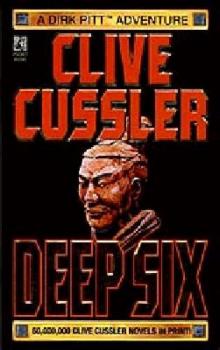 Deep Six
Deep Six Odessa Sea
Odessa Sea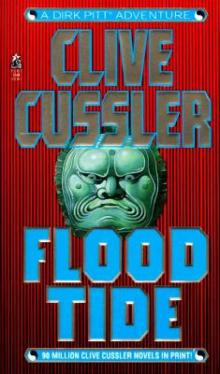 Flood Tide
Flood Tide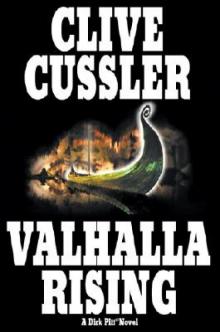 Valhalla Rising
Valhalla Rising Thriller 2
Thriller 2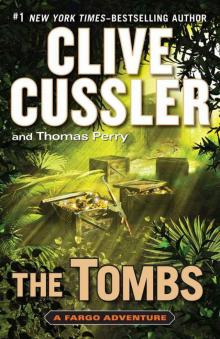 The Tombs
The Tombs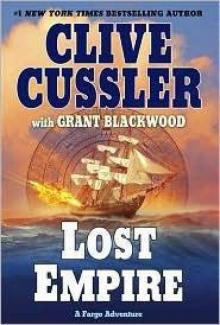 Lost Empire
Lost Empire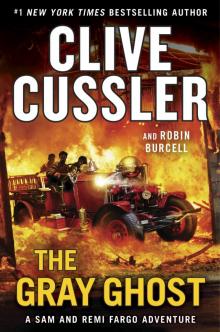 The Gray Ghost
The Gray Ghost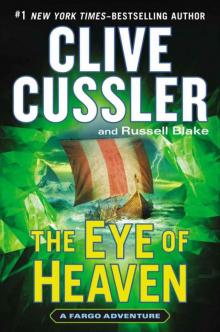 The Eye of Heaven
The Eye of Heaven Polar Shift
Polar Shift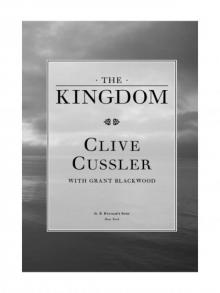 The Kingdom
The Kingdom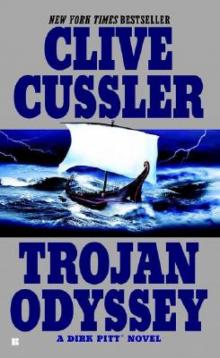 Trojan Odyssey
Trojan Odyssey Shadow Tyrants
Shadow Tyrants Nighthawk
Nighthawk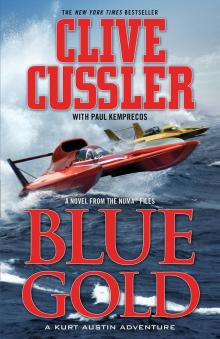 Blue Gold
Blue Gold Serpent
Serpent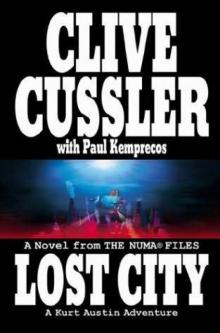 Lost City
Lost City The Gangster
The Gangster White Death
White Death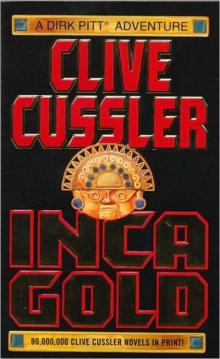 Inca Gold
Inca Gold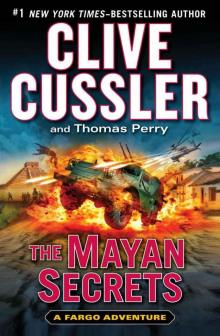 The Mayan Secrets
The Mayan Secrets The Pharaoh's Secret
The Pharaoh's Secret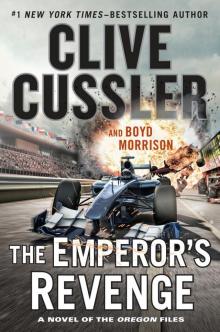 The Emperor's Revenge
The Emperor's Revenge Corsair
Corsair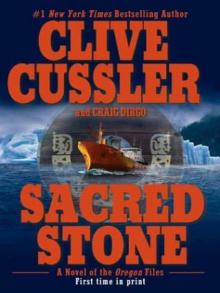 Sacred Stone
Sacred Stone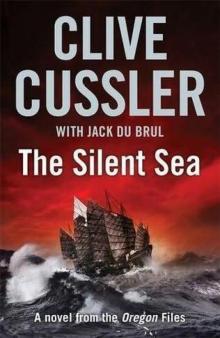 The Silent Sea
The Silent Sea The Rising Sea
The Rising Sea Black Wind
Black Wind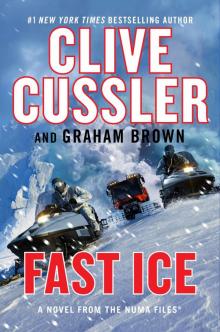 Fast Ice
Fast Ice Ghost Ship
Ghost Ship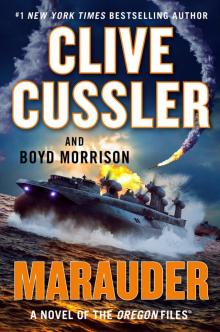 Marauder
Marauder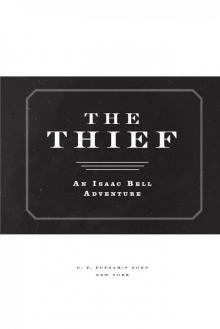 The Thief
The Thief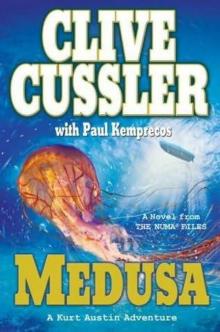 Medusa
Medusa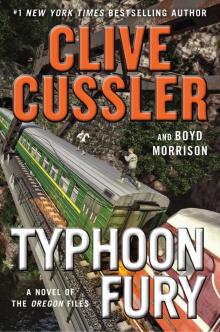 Typhoon Fury
Typhoon Fury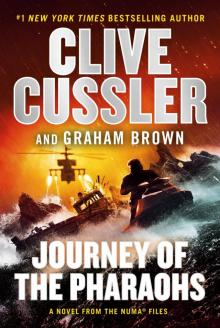 Journey of the Pharaohs
Journey of the Pharaohs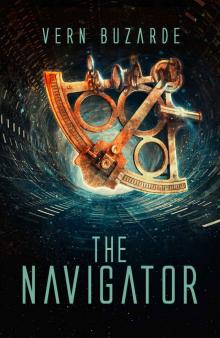 The Navigator
The Navigator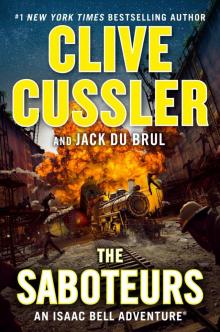 The Saboteurs
The Saboteurs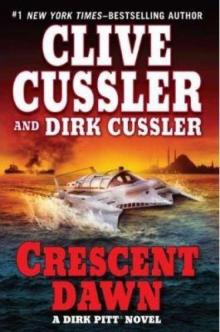 Crescent Dawn
Crescent Dawn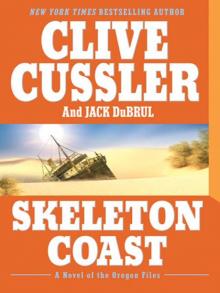 Skeleton Coast
Skeleton Coast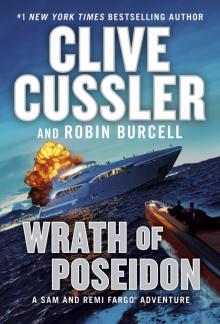 Wrath of Poseidon
Wrath of Poseidon The Mediterranean Caper
The Mediterranean Caper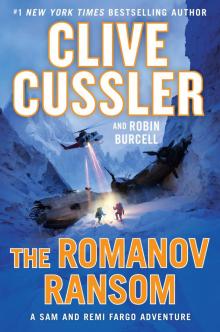 The Romanov Ransom
The Romanov Ransom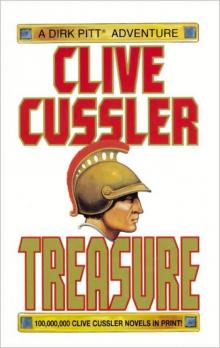 Treasure
Treasure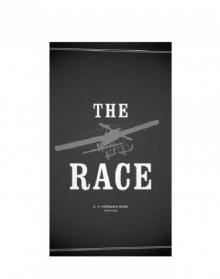 The Race
The Race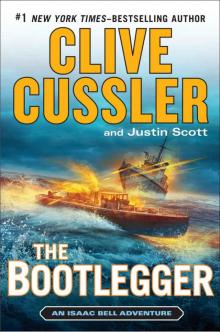 The Bootlegger
The Bootlegger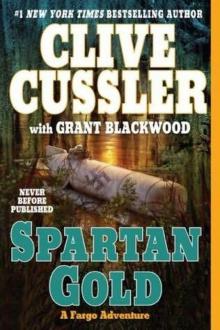 Spartan Gold
Spartan Gold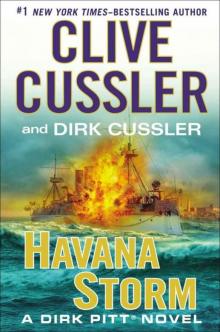 Havana Storm
Havana Storm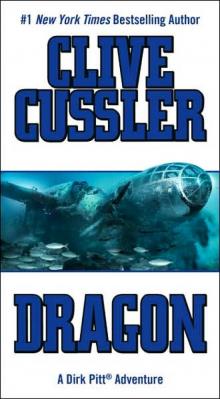 Dragon
Dragon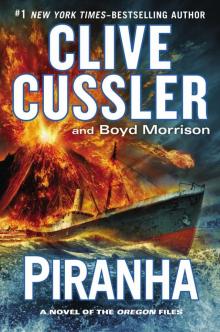 Piranha
Piranha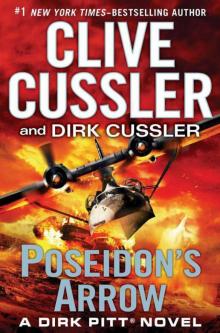 Poseidon's Arrow
Poseidon's Arrow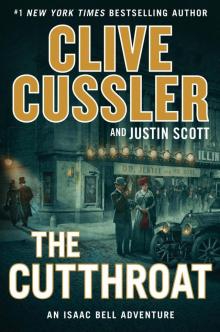 The Cutthroat
The Cutthroat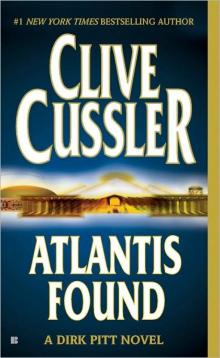 Atlantis Found
Atlantis Found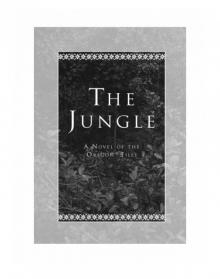 The Jungle
The Jungle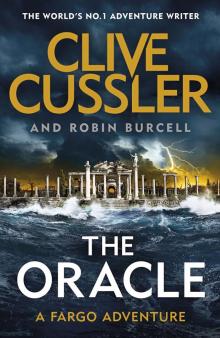 The Oracle
The Oracle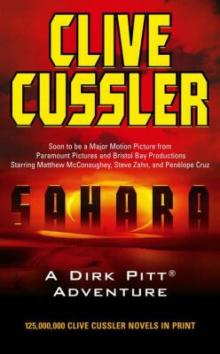 Treasure / Dragon / Sahara: Clive Cussler Gift Set
Treasure / Dragon / Sahara: Clive Cussler Gift Set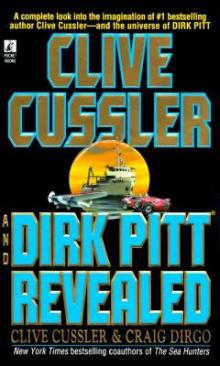 Clive Cussler and Dirk Pitt Revealed
Clive Cussler and Dirk Pitt Revealed The Sea Hunters
The Sea Hunters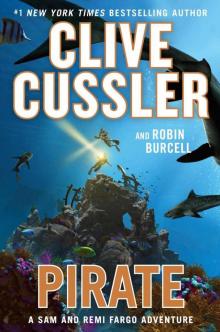 Pirate
Pirate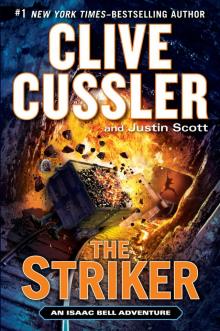 The Striker
The Striker Plague Ship
Plague Ship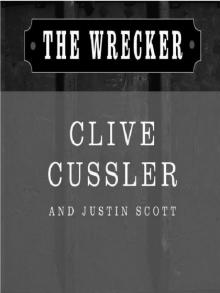 The Wrecker
The Wrecker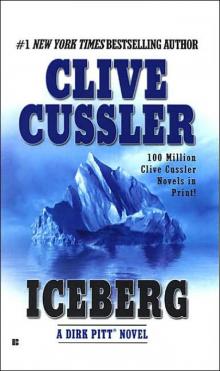 Iceberg
Iceberg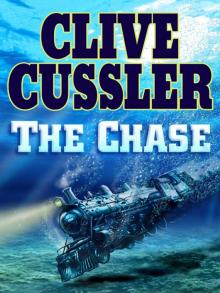 The Chase
The Chase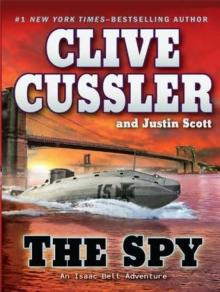 The Spy
The Spy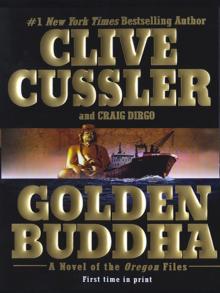 Golden Buddha
Golden Buddha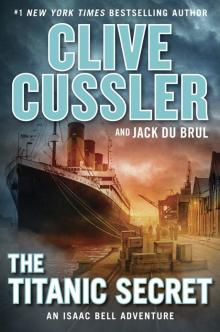 The Titanic Secret
The Titanic Secret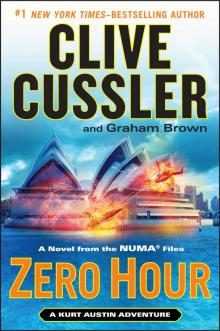 Zero Hour
Zero Hour Fire Ice
Fire Ice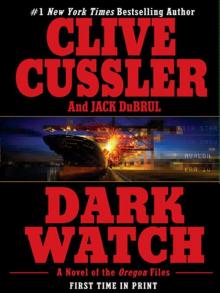 Dark Watch
Dark Watch The Storm
The Storm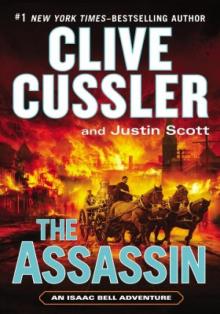 The Assassin
The Assassin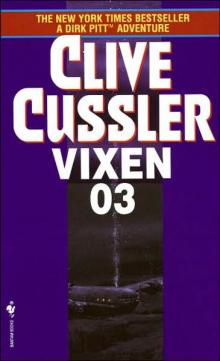 Vixen 03
Vixen 03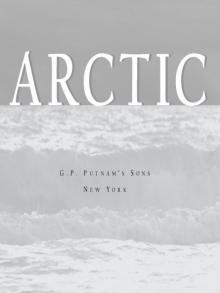 Arctic Drift
Arctic Drift Night Probe!
Night Probe! Cyclops
Cyclops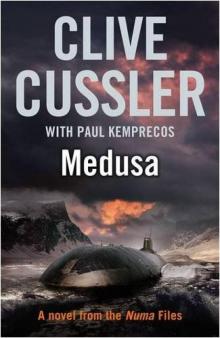 Medusa nf-8
Medusa nf-8 Shock Wave dp-13
Shock Wave dp-13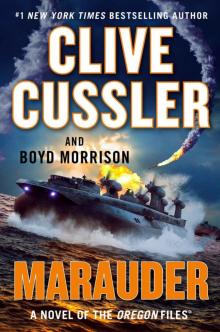 Marauder (The Oregon Files)
Marauder (The Oregon Files)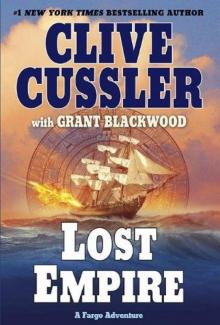 Lost Empire fa-2
Lost Empire fa-2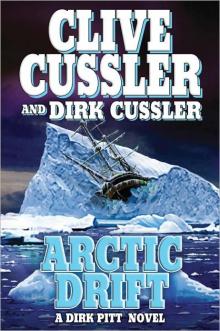 Arctic Drift dp-20
Arctic Drift dp-20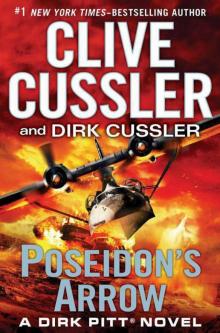 Dirk Pitt 22 - Poseidon's Arrow
Dirk Pitt 22 - Poseidon's Arrow Treasure of Khan dp-19
Treasure of Khan dp-19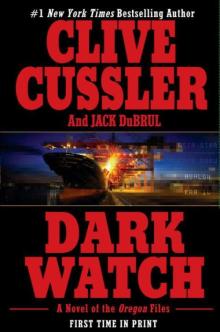 Dark Watch of-3
Dark Watch of-3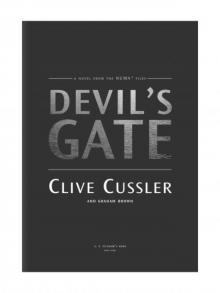 Devil's Gate
Devil's Gate The Sea Hunters II: More True Adventures with Famous Shipwrecks
The Sea Hunters II: More True Adventures with Famous Shipwrecks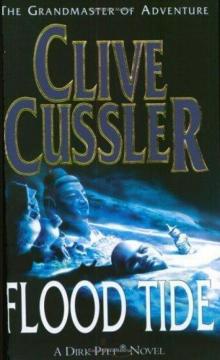 Flood Tide dp-14
Flood Tide dp-14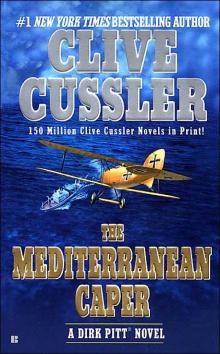 The Mediterranean Caper dp-2
The Mediterranean Caper dp-2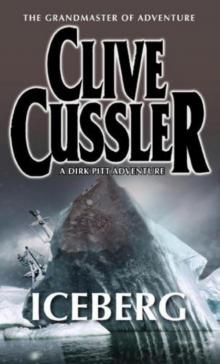 Iceberg dp-3
Iceberg dp-3 Sahara dpa-11
Sahara dpa-11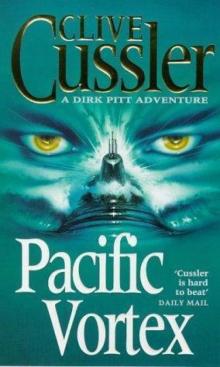 Pacific Vortex! dp-1
Pacific Vortex! dp-1 Deep Six dp-7
Deep Six dp-7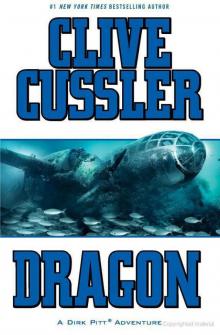 Dragon dp-10
Dragon dp-10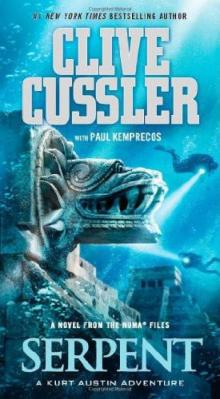 Serpent nf-1
Serpent nf-1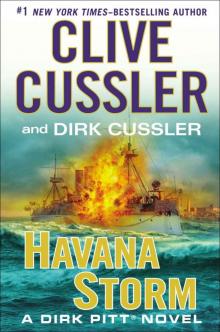 Havana Storm (Dirk Pitt Adventure)
Havana Storm (Dirk Pitt Adventure)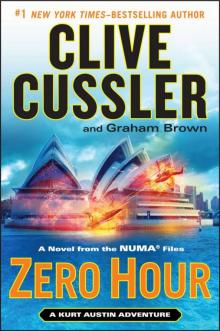 Zero Hour nf-11
Zero Hour nf-11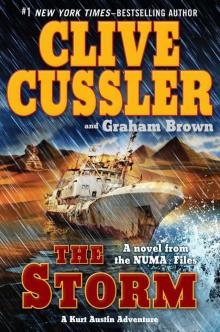 The Storm nf-10
The Storm nf-10 The Thief ib-5
The Thief ib-5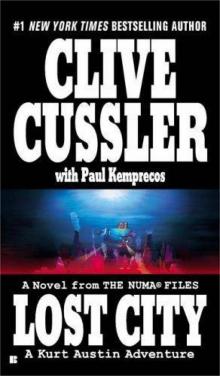 Lost City nf-5
Lost City nf-5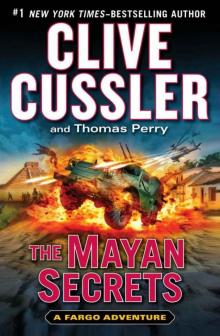 The Mayan Secrets fa-5
The Mayan Secrets fa-5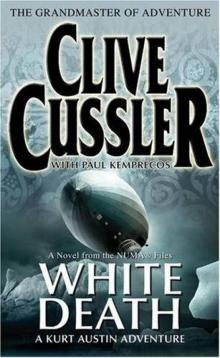 White Death nf-4
White Death nf-4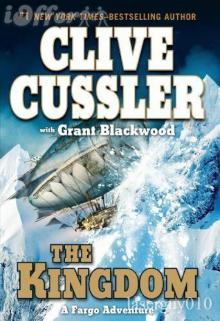 The Kingdom fa-3
The Kingdom fa-3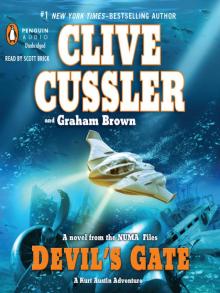 Devil's Gate nf-9
Devil's Gate nf-9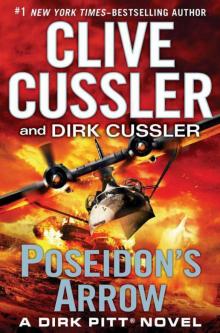 Poseidon's Arrow dp-22
Poseidon's Arrow dp-22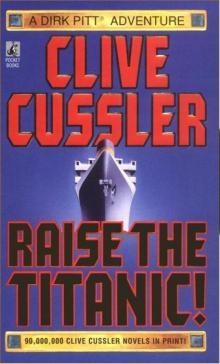 Raise the Titanic dp-4
Raise the Titanic dp-4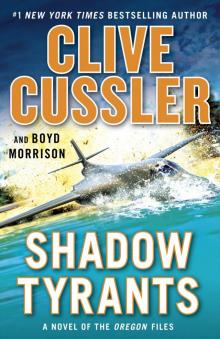 Shadow Tyrants--Clive Cussler
Shadow Tyrants--Clive Cussler Sacred Stone of-2
Sacred Stone of-2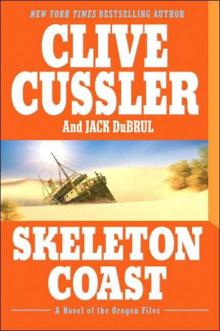 Skeleton Coast tof-4
Skeleton Coast tof-4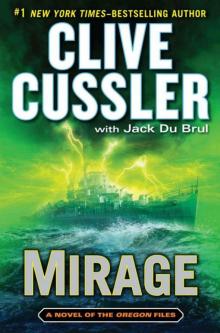 Mirage tof-9
Mirage tof-9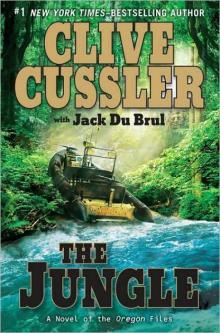 The Jungle of-8
The Jungle of-8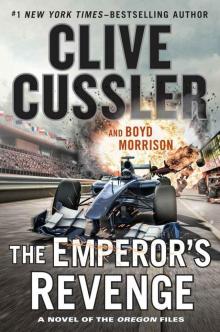 The Emperor's Revenge (The Oregon Files)
The Emperor's Revenge (The Oregon Files)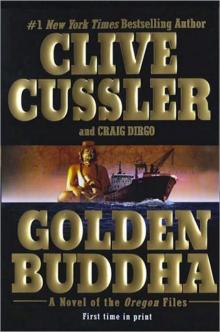 Golden Buddha of-1
Golden Buddha of-1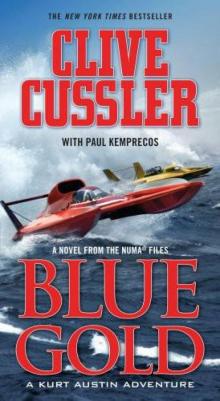 Blue & Gold
Blue & Gold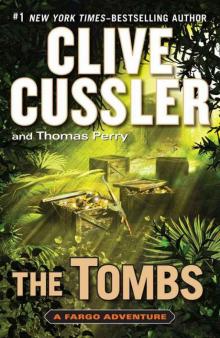 The Tombs fa-4
The Tombs fa-4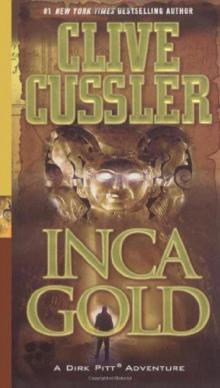 Inca Gold dp-12
Inca Gold dp-12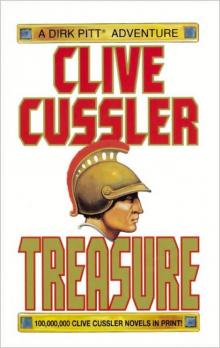 Treasure dp-9
Treasure dp-9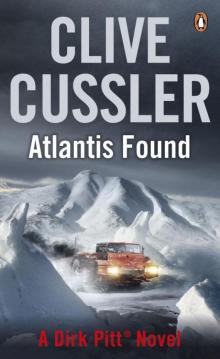 Atlantis Found dp-15
Atlantis Found dp-15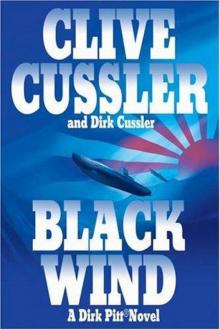 Black Wind dp-18
Black Wind dp-18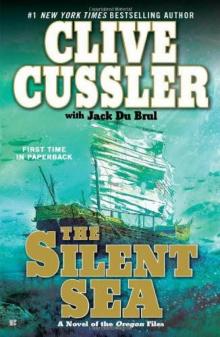 the Silent Sea (2010) tof-7
the Silent Sea (2010) tof-7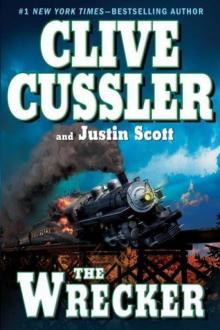 The Wrecker ib-2
The Wrecker ib-2 Fire Ice nf-3
Fire Ice nf-3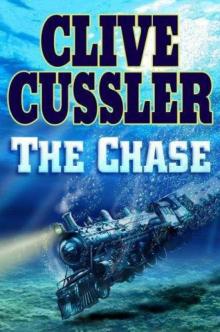 The Chase ib-1
The Chase ib-1 Sahara
Sahara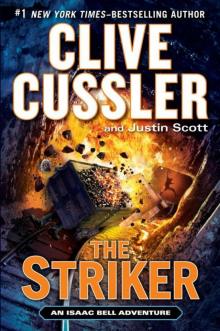 The Striker ib-6
The Striker ib-6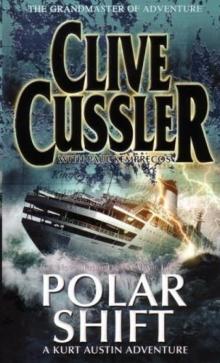 Polar Shift nf-6
Polar Shift nf-6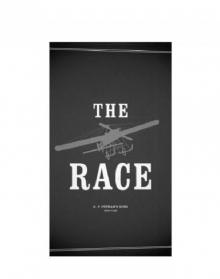 The Race ib-4
The Race ib-4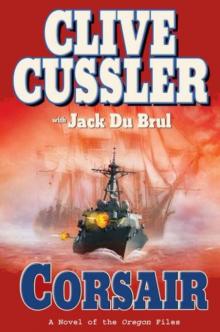 Corsair of-6
Corsair of-6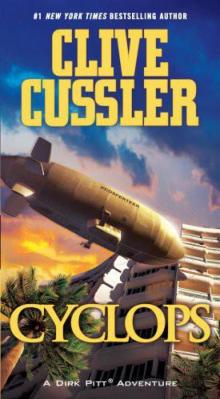 Cyclops dp-8
Cyclops dp-8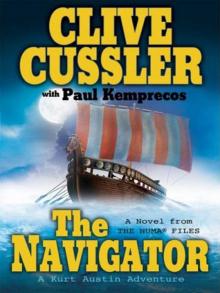 The Navigator nf-7
The Navigator nf-7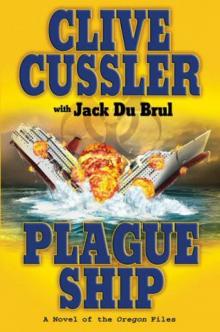 Plague Ship tof-5
Plague Ship tof-5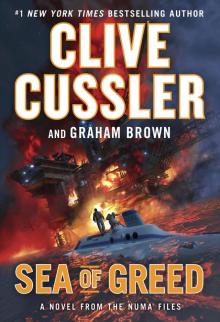 Sea of Greed
Sea of Greed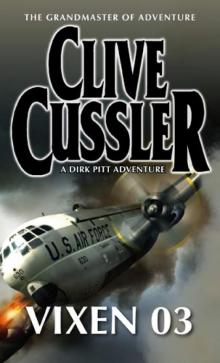 Vixen 03 dp-5
Vixen 03 dp-5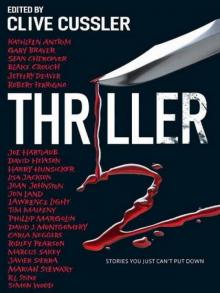 Thriller 2: Stories You Just Can't Put Down
Thriller 2: Stories You Just Can't Put Down